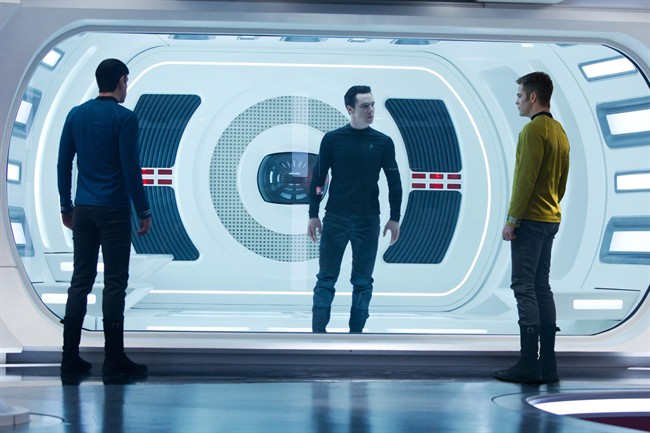Enjoying that cell phone? How about that tablet you have? Well, like it or not, you have Star Trek to thank for that.

When Star Trek made its debut on September 8, 1966, it didn’t receive the critical acclaim that you might think it did.
In fact, the show only lasted until June 1969. The series, with its colourful aliens, salt-shaker medical equipment (yes, that’s what Dr. McCoy’s equipment was actually made of) and its pointy-eared first officer, just didn’t have enough wide appeal.
In fact, even its original pilot “The Cage,” which didn’t feature William Shatner as Captain Kirk, but rather Jeffery Hunter as Captain Pike, didn’t air until 1988.
Read: Space station crew gets advance screening of new movie, Star Trek Into Darkness
However, it found a new following in 1987 with the new series, Star Trek: The Next Generation. Three other series followed in the years to come.
But Star Trek was more than just a television show. It inspired a generation of scientists and inventors to bring to our lives the technological innovations that were on screen.
Here are just a few:
1. Cell phones
When Captain Kirk was on an away mission and needed to communicate with the Enterprise, he’d whip out his handy device and, with a flick of the wrist, open up his communicator. The inventor of the mobile phone, Martin Cooper, has admitted he was inspired by Captain Kirk.
2. Bluetooth
Communications officer Uhura (from the original series) was always touching her ear to listen in and communicate with other ships. The idea of having a small device that fit into your ear to use to communicate was yet another far-fetched idea, but has become a necessity of everyday life, particularly if you drive.
3. Automatic doors
Remember the “swoosh” sound of a door opening every time someone walked near it in Star Trek? The technology seemed unrealistic to some (renowned astrophysicist Neil deGrasse Tyson has even admitted that was the one bit of technology he found truly unbelievable at the time of the original series), but today, it’s found everywhere.
4. Tablets
Crew members on the Enterprise in Star Trek: The Next Generation used “PADDS” or Personal Access Display Devices. These flat-screen computers would allow them to access the ship’s data or even write personal notes and communicate with someone across space (see #7). Today, some nursery schools are even using tablets as teaching tools.
5. Voice activation
We may not be at the point where we tap our chests to activate voice communications, but with the introduction of iPhone’s Siri, it seems we’re almost there. With a press of a button, we can ask our devices to find a local restaurant, give us instructions or find the nearest hospital.
6. GPS
When the away crew needed a quick beam up from a planet, the ship’s computer would locate them, lock on and return them to the ship safe and sound. Well, most of the time. Today GPS are found in cars and help guide us.
7. FaceTime
The idea of ordinary people communicating with someone across vast distances in real time was a laughable concept in the 1960s…even in the 1990s. Technological advances not only allow us to do this with computers, but even on our small mobile devices.
There are still many more technological innovations put forth by the writers of Star Trek that are being developed, including cloaking devices, androids and matter-antimatter power generation. If you think these things will never make it to our lives, just remember how implausible it would have sounded 40 years ago to have a cell phone triangulate your location.





Comments